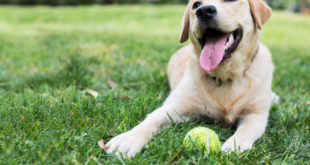The sun is shining, the birds are singing, and you and your furry friend are strolling down the street. But suddenly, your four-legged companion starts tugging at the leash, pulling you along with them. Frustration sets in and you wonder why you can’t enjoy a peaceful walk together. If this sounds familiar, don’t fret – you’re not alone. Many dog owners struggle with their pets pulling on the leash, but the good news is that it’s a fixable issue with some training and patience. In this article, we’ll explore the art of mastering loose leash walking and provide tips for taming your pulling pup.
Table of Contents
1. Taking on the Challenge: Taming Your Pulling Pup
Training a dog properly takes patience, persistence, and a good strategy. Addressing the issue of a pulling pup can be challenging, but it is solvable. Here are several tips to help you get started on the journey of taming your pulling pup:
– Start slow: When beginning leash training, start with short periods and gradually increase the time. This helps the dog become accustomed to the leash and walking beside you.
– Use positive reinforcement: Reward your dog with praise or treats when they walk beside you without pulling. This encourages and reinforces good behavior.
– Be consistent: Consistency is key to training your pup. Continue to reinforce good behavior and ignore bad behavior.
– Invest in proper gear: Using a harness or collar designed to reduce pulling can make a significant difference.
– Practice makes perfect: Leash training is a skill that needs to be practiced daily. Over time your pup will learn to walk beside you without pulling.
Remember, taming your pulling pup takes time and dedication. With patience, persistence, and these tips, you can overcome this challenge, and enjoy a pleasant walk with your furry friend.
2. The Art of Loose Leash: Understanding Your Canine’s Behavior
Understanding and properly interpreting your dog’s behavior is essential to effectively train them to walk on a loose leash. A common misconception is that dogs naturally know how to walk on a leash and it’s only a matter of fitting them with a collar and leash. However, dogs are not born with this skill; it is something that needs to be taught and trained consistently.
One way to understand canine behavior is to observe and analyze their body language. For instance, if your dog walks ahead of you stretching the leash, it means they are leading the way and you are following. On the other hand, if they walk behind you, it suggests the opposite. Similarly, if your dog’s ears are up and alert, they might be excited about the walk, while droopy ears could indicate that your dog is uncomfortable or anxious.
Being aware of your dog’s behavior can help you respond to their needs and train them effectively. Consistency is key when it comes to training your dog to walk on a loose leash. With time, patience, and positive reinforcement, your dog will learn to walk by your side on a loose leash, making walks more enjoyable for the both of you.
3. The Magic of Positive Reinforcement: Training Tips You Need to Know
Training your furry buddy can be an overwhelming task, but with the right guidance and approach, it can be a fun and enjoyable experience for both of you. Employing positive reinforcement techniques is the key to successful dog training. Here are some tips to get you started:
- Reward Good Behavior: One of the most important training tips you need to know is to reward your dog’s good behavior with treats, praise or playtime. This will motivate your dog to repeat the behavior again and again.
- Be Consistent: Consistency is key when it comes to training your dog. Make sure everyone in the family follows the same training techniques to avoid confusion and ensure your dog understands the commands.
- Start Small: Don’t overwhelm your dog with too much information at once. Start by teaching basic commands such as sit, stay and come. Once your dog masters these, you can gradually move on to more complex training.
- Be Patient: Dogs learn at different paces, so be patient and don’t get frustrated if your dog does not master a command quickly. It takes time, consistency and patience to train your furry buddy.
By following these training tips and employing positive reinforcement techniques, you’ll be able to build a strong bond with your furry friend while also improving their behavior. Remember to always reward good behavior and be consistent in your training.
4. Tools of the Trade: Equipments That Can Help You Succeed
There’s no denying that having the right tools can give you a winning edge in any field. Whether you’re a carpenter, a cook or a marketer, having access to the right equipment can make your job easier and your work more efficient. Here are some of the tools that can help you succeed:
- Computers and Software: In today’s digital age, computers and software are essential tools for almost every profession. From managing your finances to designing a building, there’s a software application available for almost everything nowadays. It’s important to invest in a reliable computer and ensure that you have the appropriate software for your work.
- Smartphones and Tablets: These handy little devices have become ubiquitous in our lives, and it’s no wonder why. Smartphones and tablets are portable, versatile, and incredibly useful. Whether you’re using them to keep track of your schedule, communicate with your team, or capture photos and videos of your work, these devices can help you stay on top of things and be more productive.
- Premium Tools: If you’re working in a field that requires premium tools, investing in quality equipment can be a game-changer. From high-end camera lenses to professional paint brushes, premium tools can make a huge difference in the quality of your work. It pays to do your research, read reviews, and invest in tools that will help you produce the best results.
With the right tools at your disposal, you can take your work to the next level and achieve success in your chosen career. Think carefully about the equipment you need and invest in the tools that will help you succeed.
5. Practice Makes Perfect: Achieving Walking Harmony with Your Furry Friend
After mastering the basic commands and leash training, it’s now time to practice walking harmony with your four-legged companion. Achieving walking harmony with your furry friend is essential for a peaceful stroll around the block or a long hike in the woods. By following a few simple tips, you and your dog can walk together in perfect sync.
One of the first steps towards walking harmony is to make sure that your dog is familiar with your pace and walking style. You can start by walking around the house with your dog on a leash, allowing him to get accustomed to your movements and the rhythm of your steps. Gradually increase the distance and complexity of your walks, and pay close attention to your dog’s behavior and body language. If your dog shows signs of anxiety or discomfort, stop and take a break until he calms down.
Another important aspect of walking harmony with your dog is to establish clear rules and boundaries. This includes walking your dog on a short leash, avoiding distractions like other dogs or squirrels, and keeping a consistent pace throughout the walk. When your dog is walking beside you calmly and attentively, praise him and reward him with a treat. By creating a positive association between good behavior and rewards, you can encourage your dog to walk in harmony with you more often.
In conclusion, achieving walking harmony with your furry friend requires patience, consistency, and practice. By paying close attention to your dog’s behavior, establishing clear rules and boundaries, and rewarding good behavior, you and your dog can enjoy peaceful walks together. With a little time and effort, walking with your furry friend can become one of the most enjoyable activities you share together.
Mastering loose leash isn’t easy but it is a must for a pup and their owner to have a safe and enjoyable journey. Follow these steps to start them on the right track, and soon, you and your pup will be best friends, sauntering down the dog walk, with zero pulling.
 Treat For Dog – Brain Training for Dogs, Dog Training & Obedience Discover Treat For Dog and get your pup on the path to smarter, happier, and healthier living with brain training for dogs.
Treat For Dog – Brain Training for Dogs, Dog Training & Obedience Discover Treat For Dog and get your pup on the path to smarter, happier, and healthier living with brain training for dogs.




